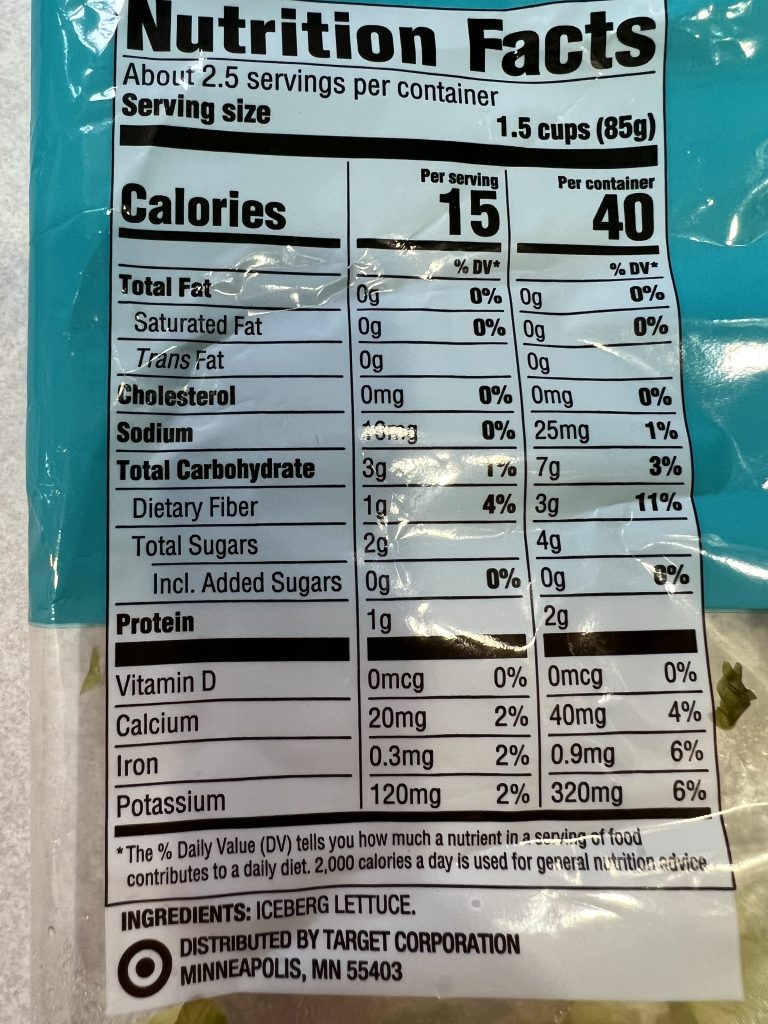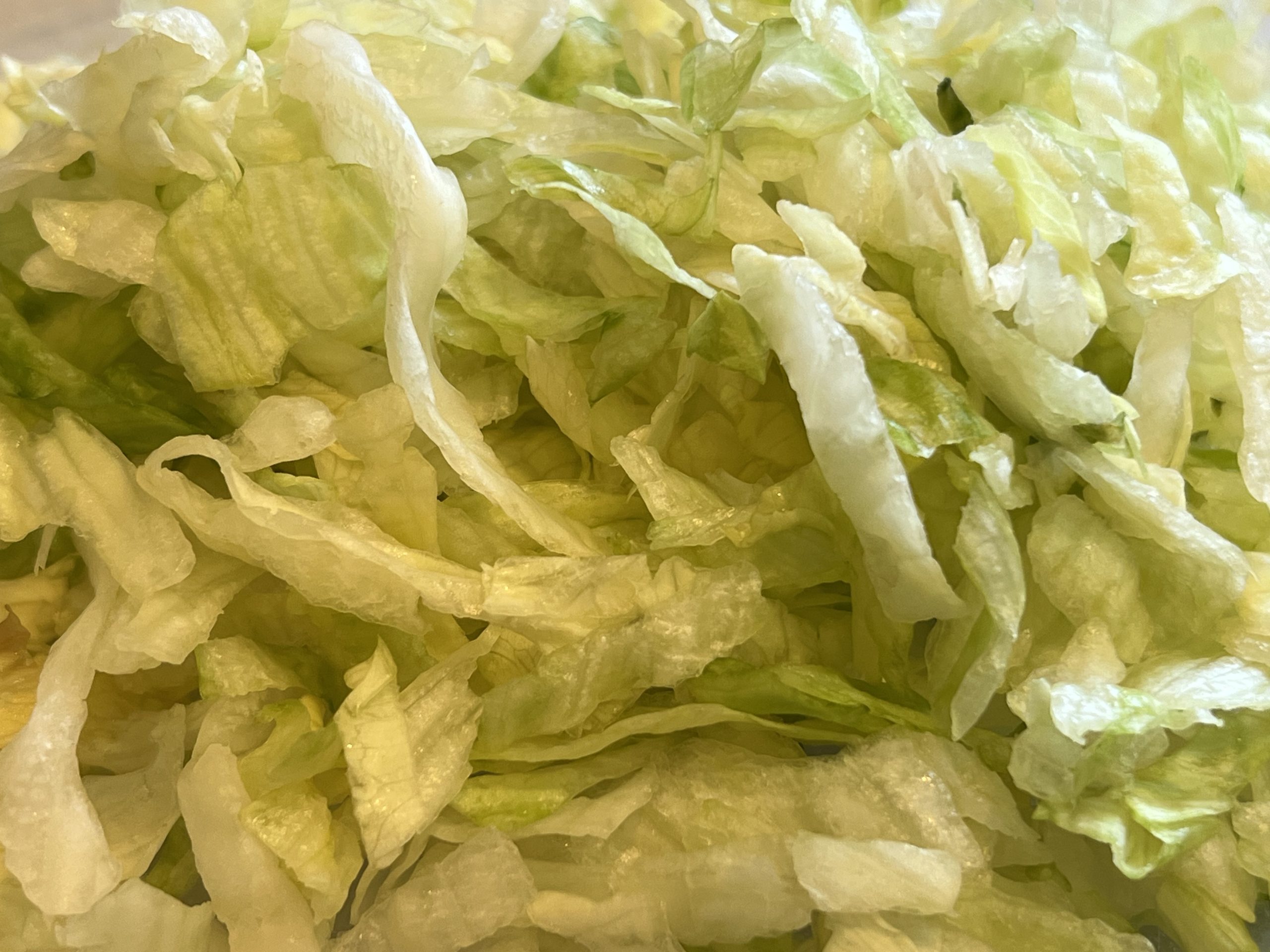Romaine lettuce, scientifically known as Lactuca sativa var. longifolia, is a popular type of lettuce that belongs to the Asteraceae family. It is named after its place of origin, the Roman Empire, where it was first cultivated. Romaine lettuce is known for its long, upright leaves and crisp texture, making it a common ingredient in salads and sandwiches (like chopped cheese). Personally, I cook with a lot of spinach myself
Here are some key points about romaine lettuce.
Table of Contents
Physical Characteristics of Romaine Lettuce
It has elongated, sturdy leaves with thick midribs and a mild, slightly bitter flavor. The outer leaves are typically darker green, while the inner leaves are lighter in color.
- Leaf Structure: Romaine lettuce has a distinct leaf structure. Its leaves are elongated, oblong, and arranged in an upright, cylindrical shape. The leaves grow tightly together, forming a compact head or “heart” in the center.
- Texture: The leaves of romaine lettuce are thick and firm, giving them a satisfying crunch when eaten. The outer leaves tend to be more robust and slightly tougher, while the inner leaves are more tender.
- Size: Romaine lettuce can vary in size depending on the variety and growing conditions. A mature romaine lettuce head typically reaches a height of 7-10 inches (18-25 centimeters) and has a diameter of 3-6 inches (8-15 centimeters). The leaves can be anywhere from 6 to 10 inches (15 to 25 centimeters) in length.
- Color: The color of romaine lettuce leaves can vary depending on the specific variety and maturity. The outer leaves are usually darker green, while the inner leaves are lighter green or yellowish. Some romaine lettuce varieties may have reddish or bronze hues on the tips or edges of the leaves.
- Rib Structure: Its leaves have prominent midribs, also known as ribs or veins. The midribs are thick, firm, and lighter in color compared to the rest of the leaf. These midribs provide structural support to the leaves and contribute to the lettuce’s overall crispness.
- Leaf Edges: The edges of romaine lettuce leaves are typically smooth and slightly serrated. The serrations, also called “teeth,” are small, irregularly spaced, and not as pronounced as those found in other lettuce varieties, such as iceberg lettuce.
Nutritional Profile
It is low in calories and a good source of vitamins, minerals, and dietary fiber.
- Macronutrients: It is low in calories and carbohydrates, making it a suitable choice if you are watching your calorie intake or following a low-carbohydrate diet. It contains about 8 calories per cup of shredded lettuce and only around 1.5 grams of carbohydrates.
- Dietary Fiber: Romaine lettuce is a good source of dietary fiber. One cup of shredded romaine lettuce provides approximately 1 gram of fiber. Fiber aids in digestion, helps maintain bowel regularity, and can contribute to a feeling of fullness, which may be beneficial for weight management.
- Vitamins: Romaine lettuce is rich in various vitamins. Here are some key vitamins found in romaine lettuce:
- Vitamin A: It is an excellent source of vitamin A, particularly in the form of beta-carotene. Beta-carotene is converted to vitamin A in the body and plays a crucial role in maintaining healthy vision, supporting the immune system, and promoting skin health.
- Vitamin C: It contains a moderate amount of vitamin C, an essential antioxidant that helps protect cells from damage, supports immune function, and aids in collagen synthesis.
- Vitamin K: It is a good source of vitamin K, which is important for blood clotting and bone health.
- Other B Vitamins: It contains small amounts of B vitamins, like Folate.
- Minerals: Romaine lettuce provides several important minerals in small amounts, including potassium, phosphorus, magnesium.

It’s important to note that the exact nutrient content of romaine lettuce can vary slightly depending on factors such as growing conditions, maturity, and preparation methods. However, as a general rule, romaine lettuce is a nutritious leafy green vegetable that can contribute to a well-balanced diet.
Health Benefits
The nutritional content offers several health benefits. Vitamin A promotes eye health and supports the immune system. Vitamin C acts as an antioxidant and helps the body absorb iron. Vitamin K plays a crucial role in blood clotting, and dietary fiber aids digestion and promotes satiety.
- Antioxidant Support: It contains vitamins A and C, which act as antioxidants in the body. Antioxidants help protect cells from damage caused by harmful molecules called free radicals. By neutralizing free radicals, antioxidants contribute to reducing the risk of chronic diseases, such as heart disease, certain cancers, and age-related macular degeneration.
- Eye Health: The high vitamin A content in romaine lettuce, in the form of beta-carotene, is essential for maintaining healthy eyes. Beta-carotene is converted into retinol, a form of vitamin A that supports good vision, particularly in low light conditions. Adequate vitamin A intake may also help reduce the risk of age-related macular degeneration, the leading cause of blindness in older adults.
- Bone Health: Romaine lettuce contains vitamin K, which plays a crucial role in bone metabolism. Vitamin K helps activate proteins that are involved in bone mineralization, contributing to bone strength and density. Adequate vitamin K intake is important for reducing the risk of osteoporosis and fractures.
- Heart Health: Romaine lettuce is low in calories and carbohydrates, making it a heart-healthy choice. The high potassium content in romaine lettuce also supports heart health by helping to maintain healthy blood pressure levels. Potassium works in conjunction with sodium to regulate fluid balance in the body and promote proper heart function.
- Digestive Health: The dietary fiber content in romaine lettuce supports healthy digestion. Fiber adds bulk to the stool, promotes regular bowel movements, and can help prevent constipation. Consuming an adequate amount of fiber from sources like romaine lettuce is associated with a lower risk of developing conditions such as hemorrhoids, diverticular disease, and colorectal cancer.
- Hydration: Romaine lettuce has a high-water content, which contributes to hydration. Staying hydrated is essential for overall health and helps maintain proper bodily functions, including temperature regulation, nutrient transport, and digestion.
It’s important to note that while romaine lettuce provides these health benefits, it should be consumed as part of a well-balanced diet that includes a variety of other fruits, vegetables, whole grains, lean proteins, and healthy fats.
Recipes to Use It In
It is commonly used as the base for salads. Its crisp texture makes it ideal for wraps and sandwiches. Romaine hearts, the inner leaves of the lettuce, are often used as a lettuce wrap alternative for various fillings.
Growing Conditions of Romaine Lettuce
It prefers cool temperatures and grows best in spring and fall. It requires well-drained soil, ample sunlight, and regular watering. It is a versatile crop that can be grown in both gardens and containers.
Harvesting and Storage
It can be harvested by cutting the whole head or by removing outer leaves as needed. To store romaine lettuce, wrap the unwashed leaves in a paper towel and place them in a perforated plastic bag in the refrigerator. It is best consumed within a few days for optimal freshness.
Safety Concerns for Romaine Lettuce
In recent years, it has been associated with foodborne illness outbreaks caused by strains of E. coli bacteria. These outbreaks have been linked to contaminated water used for irrigation or unsanitary handling practices. It is crucial to follow food safety guidelines, including washing the lettuce thoroughly before consumption.
